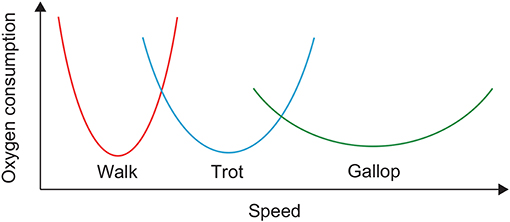
#FridayPhysicsFun – This has been a month full of space news, with billionaires in space, nail biters when Nauka and Hubble glitched, test firing of the Super Heavy booster for Starship. But where are the limits to going *fast*? flic.kr/p/56Zfnf
Obviously Einstein blocks us at lightspeed, and Tsiolkovsky makes it expensive to use fast rockets. But I am more interested in locomotion in general. 

There is a classic finding that animal speeds increase with body mass by the about 0.2th power – up to a point of about 119 kg. Elephants are not faster than cheetahs. …lpublications.onlinelibrary.wiley.com/doi/abs/10.111… doi.org/10.1002/ecy.20… 

The general reason is scaling: more muscles, more mass, more resistance. Bursts of speed require anaerobic metabolism that fatigues fast, but big animals need time to accelerate. Bad news for T rex. nature.com/articles/s4155… 



Different gaits have different energy requirements at different speeds, and normal walking and running speed are local optima – it takes more energy to do them at the “wrong” speed because of how legs act as pendulums. royalsocietypublishing.org/doi/10.1098/rs… nature.com/articles/29223… 



The time a pendulum of length L takes to swing is ∝√L, so longer legs swing slower. But they move you a distance ∝L per swing, so the overall effect is a speed ∝√L. Which is why kids have to walk fast to keep up with adults walking at a normal rate.
This applies to robots too.
robohub.org/a-robotic-gait…
robohub.org/a-robotic-gait…
Technological locomotion can do things animals cannot. For air and water locomotion this continues the scalings found in biology but boosted by larger "body size" and the use of more calorie-dense fuels. doi.org/10.1063/1.5099… 

Gabrielli and von Kármán plotted the specific power (watt per kg) against speed in 1950, finding that different means tended to be tangent to or lie inside a curve (power)*(speed)/(mass)=constant canvas.stanford.edu/files/3736453/… 

That curve corresponds to a "specific tractive force" equal to the resistance experienced. Hence the interest in maglev trains and the Hyperloop (get rid of air resistance).
The frontier depends on technology, gradually moving towards higher speeds for less specific power for new kinds of vehicles while older kinds often remain cost-effective for other reasons. Merchant ships are more effective than bikes, but bad on roads. link.springer.com/article/10.100…
Animals are generally left far behind, perhaps for similar evolutionary cost-effectiveness reasons. If your territory is not enormous you do not need the speed. jstor.org/stable/986522 flic.kr/p/5swzYb
Rockets "cheat" by moving through empty space with no gravity, and can in principle just keep on accelerating (until Tsiolkovsky gets them). In practice the early stages are very power-hungry.
https://twitter.com/ToughSf/status/1417475943657091079
The fundamental limit of the Gabrielli-von Kármán curve is presumably set by the maximal tensile strengths of materials (since it is really a kind of force limit), which current aerospace materials are many orders of magnitude away from.
What is the strongest possible material to build wheels or rockets from? One argument is things like diamond and carbon nanofibers: they are close to the limit of what molecular bonds can achieve.
Another argument is that the speed of sound is v=√(E/ρ), giving the specific strength E/ρ in terms of the speed v^2. There are arguments that for molecular matter the fastest possible speed of sound is v=α(electron mass/2 proton mass)^(1/2) c =36.1 km/s advances.sciencemag.org/content/6/41/e…
What if there was some unknown kind of matter?
Theoretically, the fastest possible speed of sound is the speed of light, which gives a specific strength of c^2. This is also the limit set by the dominant energy condition giving the slightly lower c^2/3. en.wikipedia.org/wiki/Energy_co…
Theoretically, the fastest possible speed of sound is the speed of light, which gives a specific strength of c^2. This is also the limit set by the dominant energy condition giving the slightly lower c^2/3. en.wikipedia.org/wiki/Energy_co…
Carbon fibers have specific strength up to 3911 kNm/kg. Nanotubes are ~15 times better. Theoretical matter 333 times. Ultimate limit 7.6 billion times better? This suggests we can move that efficiency line several orders of magnitude. Or take a bike. flic.kr/p/noSFL2
• • •
Missing some Tweet in this thread? You can try to
force a refresh






